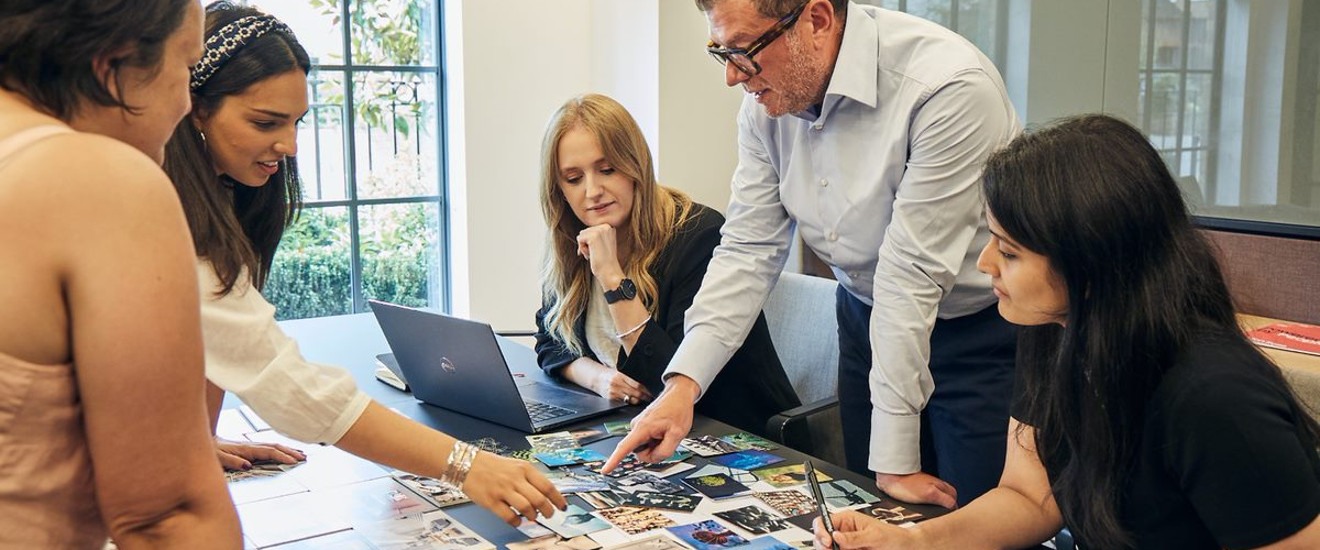How Change Management can help overcome business challenges
Learn how to use Change Management to easily solve problems with this three-step integrated process.

Having previously explored what change management means and why it’s important, we caught up with Principal Strategy Consultant, Sophie Grant, to understand more about our strategy teams three-part, project integrated change management process.
What is the change management process?
There isn’t a cookie-cutter solution to change management – every client is unique therefore every change management solution we create is truly bespoke.
We rely on a holistic framework to facilitate the change journey for employees. Our process relies heavily on co-creation and engagement. By being actively involved in the process helps to establish buy-in and encourages ownership of change.
We start by determining the level of change effort required for each client. The extent of change needed varies from business to business depending on several variables, we look at current conditions, needs, resources and attitudes of the organisation. Once we have a clear understanding, we define change management as a three-part, project integrated process.
All three are crucial to success, otherwise you run the risk of employee disengagement and frustration - our consultant-led change process is conducted for and with employees.
Step one - Motivate - Why should your employees care?
The first step is about understanding and demonstrating why and what is changing. What’s the vision and strategy for change? If the why message isn’t clear or authentic, you’ll struggle to get people onboard and motivated. This step helps to:
- Define the current, transition and future state
- Identify anticipated areas of resistance
- Define the change team structure
- Set up a change roadmap and communications plan
- Identify and prepare a network of change ambassadors
Motivate activities can include:
- Visioning workshop with key stakeholders
- Change readiness and impact assessment
- Stakeholder mapping
- Message branding and communications plan
- Bespoke change roadmap developed
- Change Ambassador on-boarding
Step two - Educate - Can your people do it?
The next step is helping people understand how to change, building awareness and creating a receptive environment for change. We quip employees with the right tools to prepare. Change can be challenging; however, we aim to create momentum through original and engaging narratives. This step helps to:
- Implement and monitor progress against a change roadmap
- Support internal change management resources
- Collect and analyse feedback
- Diagnose gaps and manage resistance
Educate activities can include:
- Change ambassador workshops
- Furniture pilots and mock ups
- Engagement events (e.g., room naming contests, packing parties)
- Townhall sessions
- Project newsletter emails
- Intranet or microsite updates
- Manager training
Step three - Sustain - How will your people make the change stick?
The final step is about living the longevity of change, empowering people to adapt to change and increase acceptance. It also focuses on evaluating, measuring and continuous improvement. This step helps to:
- Measure adoption of change
- Identify lessons learnt
- Develop a continuous improvement action plan
Sustain activities can include:
- Change ambassador feedback sessions
- Post-occupancy survey
- Digital welcome packs
- User guide change app (e.g., ‘find my colleague’, ‘FAQs’, ‘wayfinding’)
- Train the trainer sessions
How long does the change management process take?
No two projects are the same and neither are their timelines. However, change management should be proactive: a plan for the plan. It should be implemented and integrated from day one as soon as a direction or future vision for the workplace has been decided. By engaging stakeholders upfront, valuable feedback can be implemented throughout the creation of a new workplace strategy and design.
Our in-house Workplace Strategy team
Headed up by Leeson Medhurst, our Workplace Strategy team works with clients to create a complete, accurate and insight-based picture of what your workplace could and should achieve. Then, we help show you what the space could look like, how it can evolve, whilst ensuring we take your team along the entire journey.

Start your workplace transformation today.
Your workplace holds enormous potential to improve your business performance. Get in touch today, and we will unlock that potential together.


